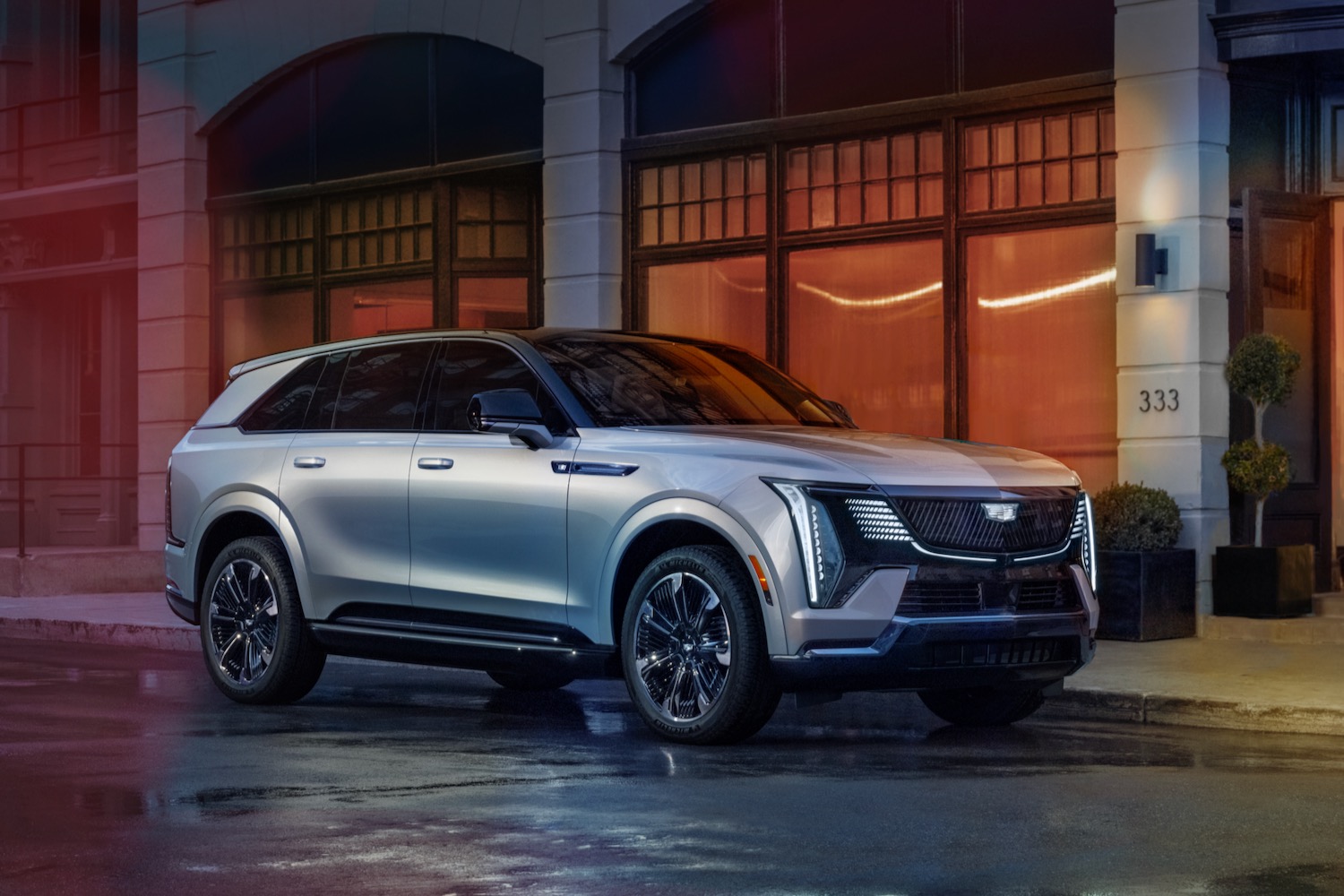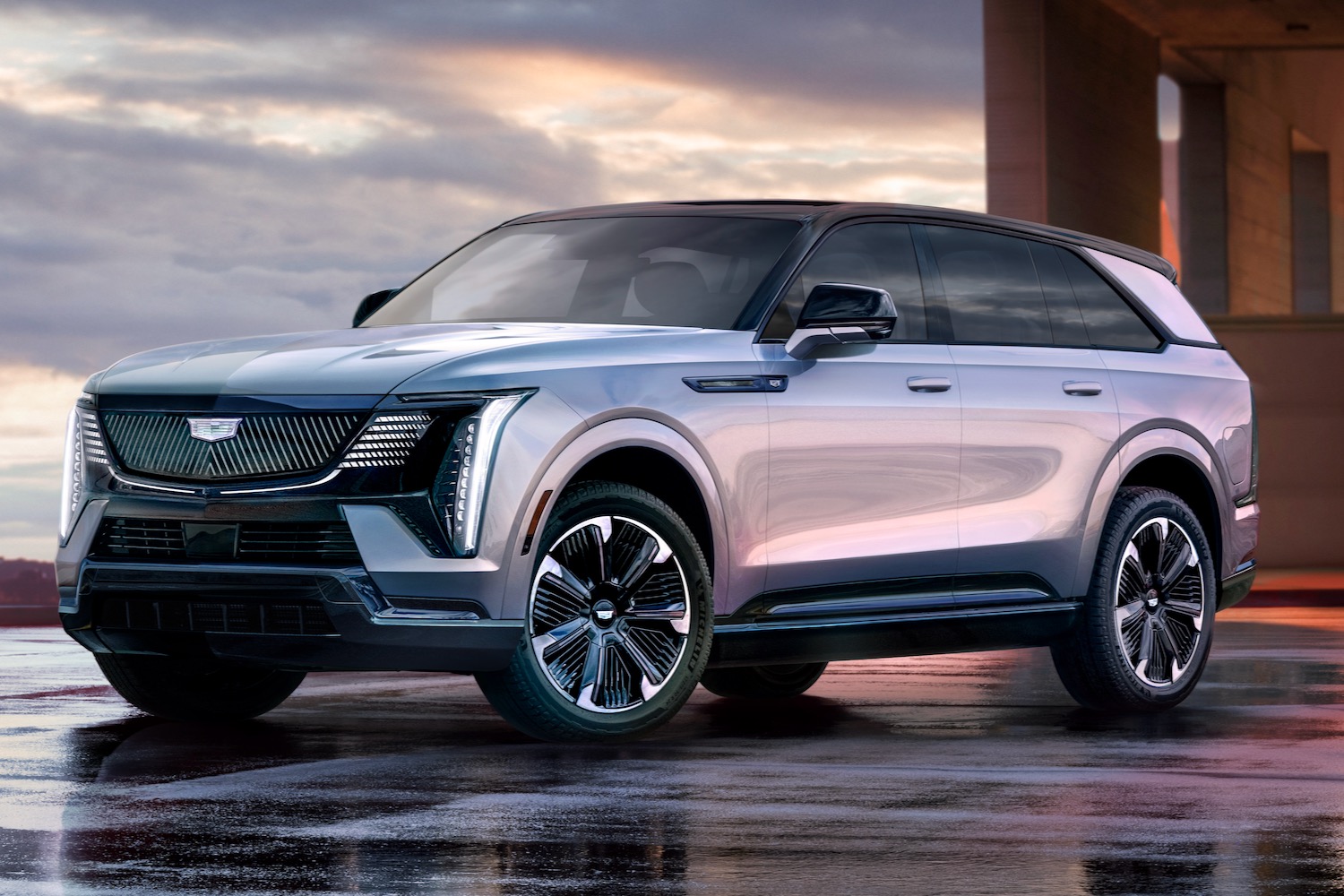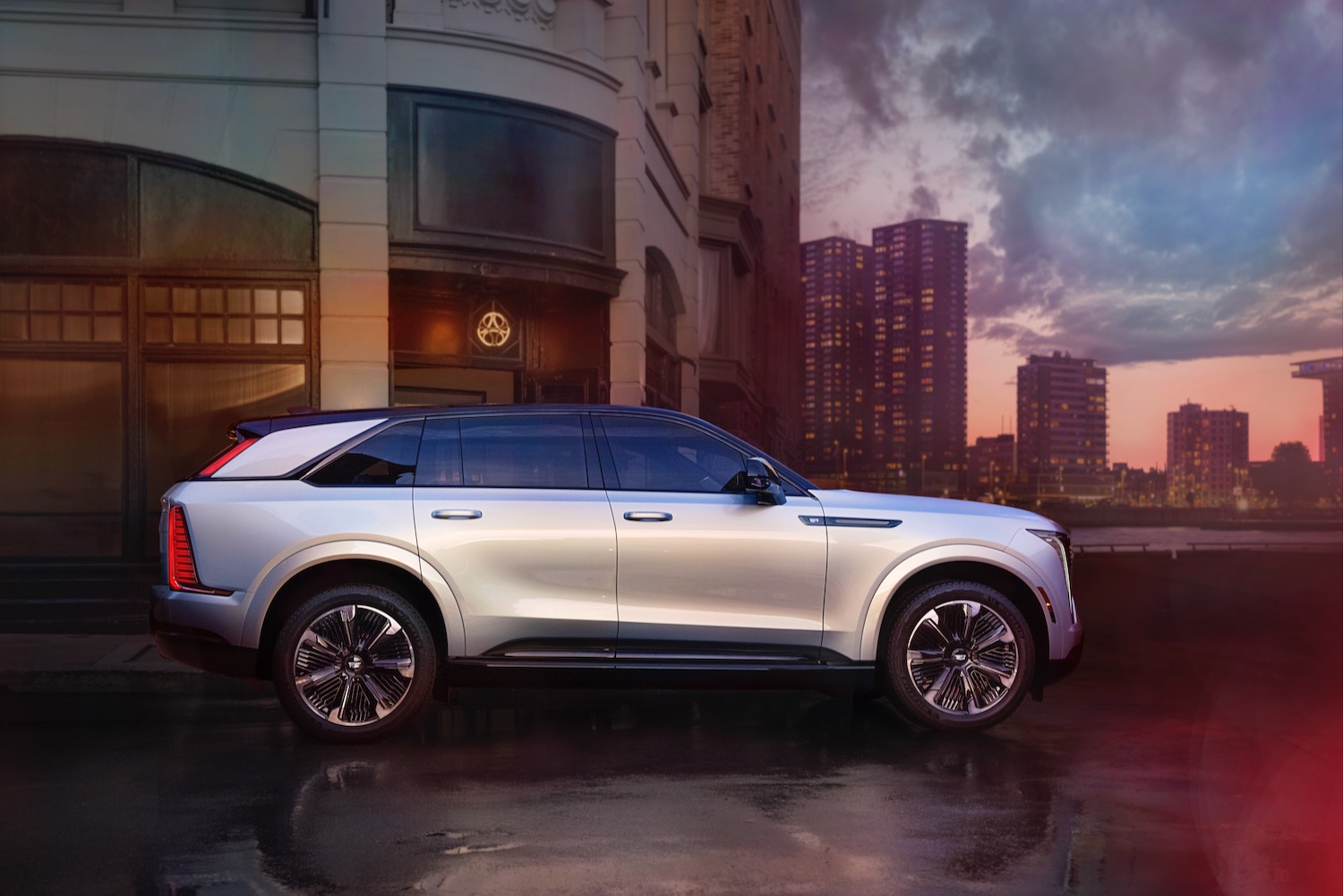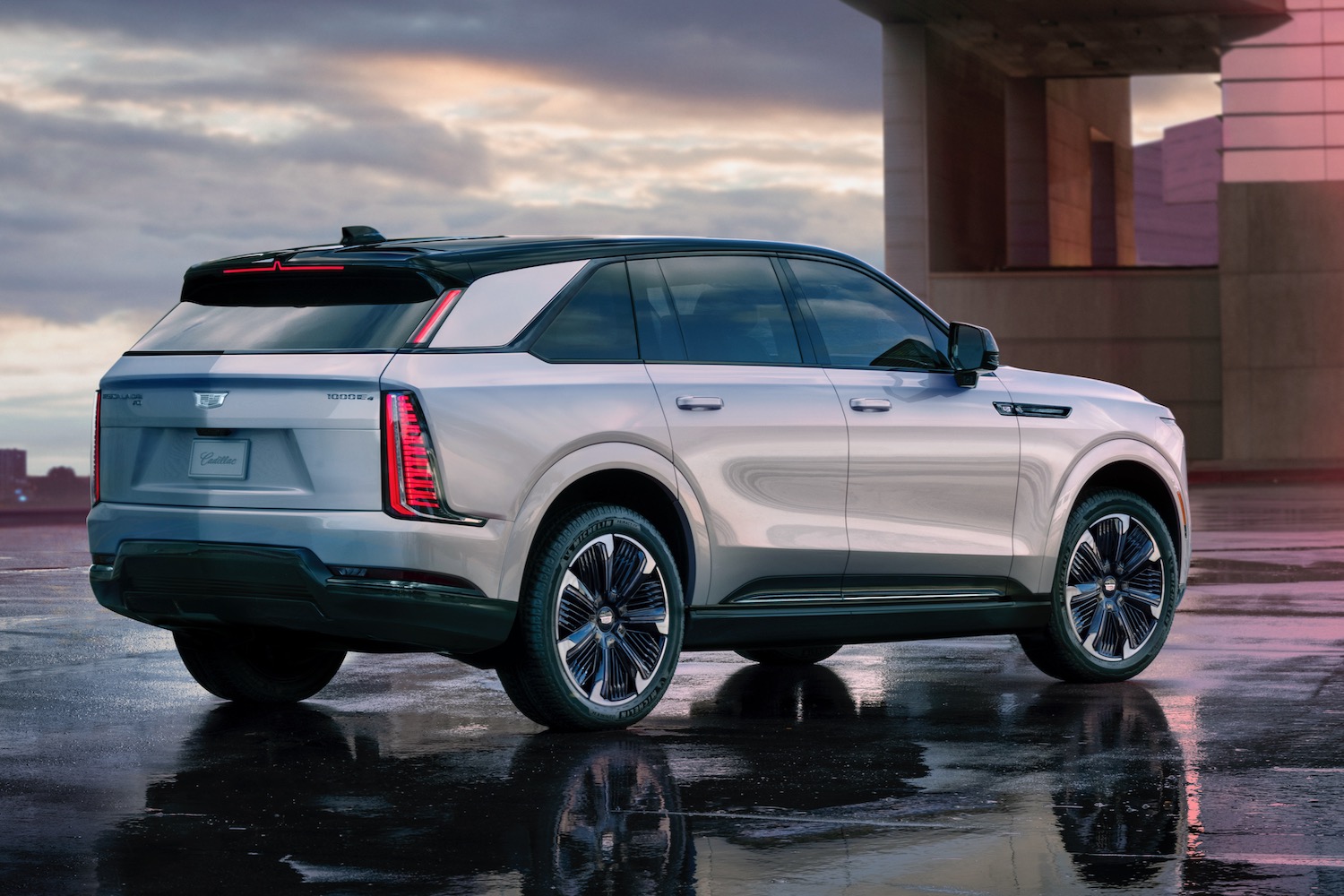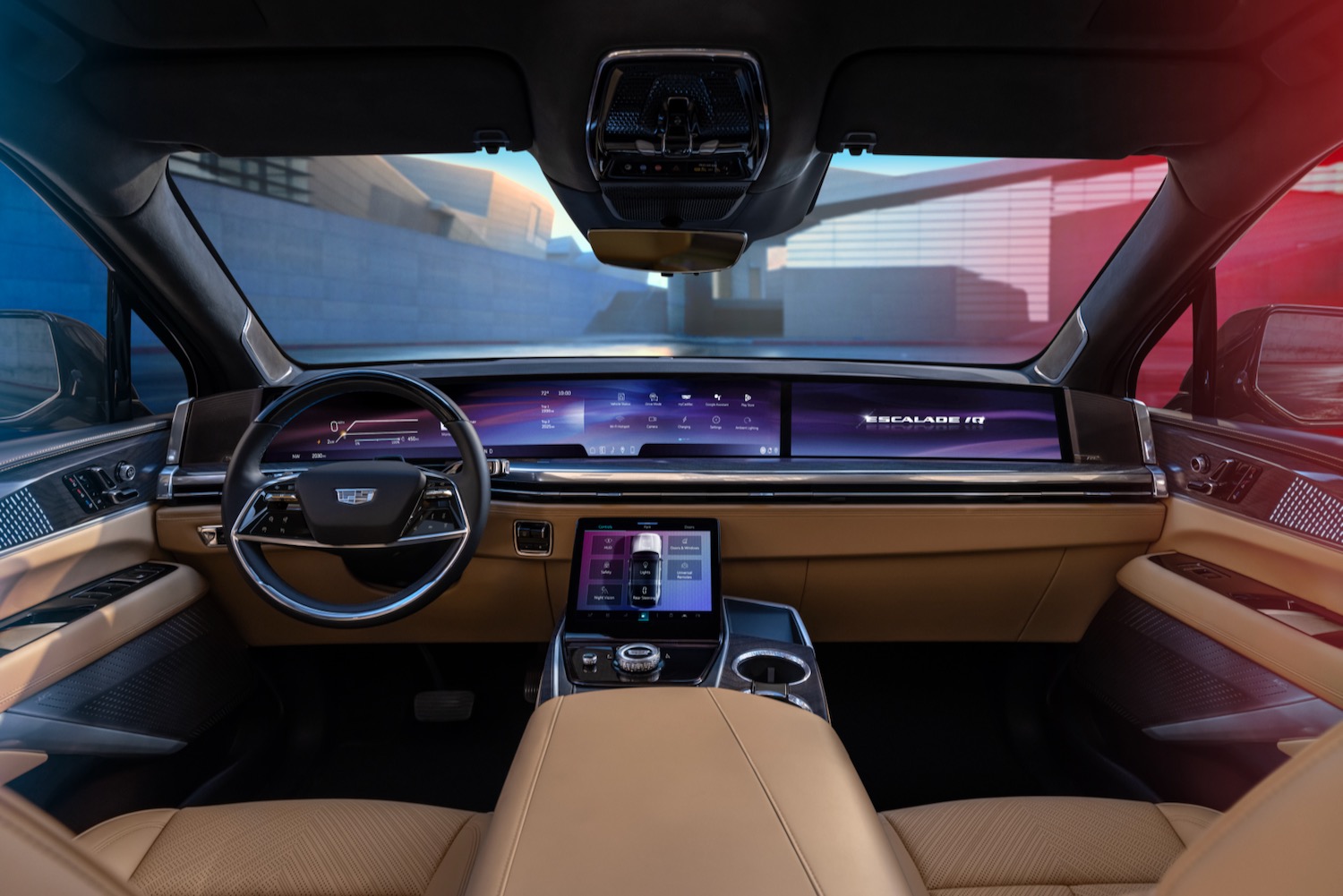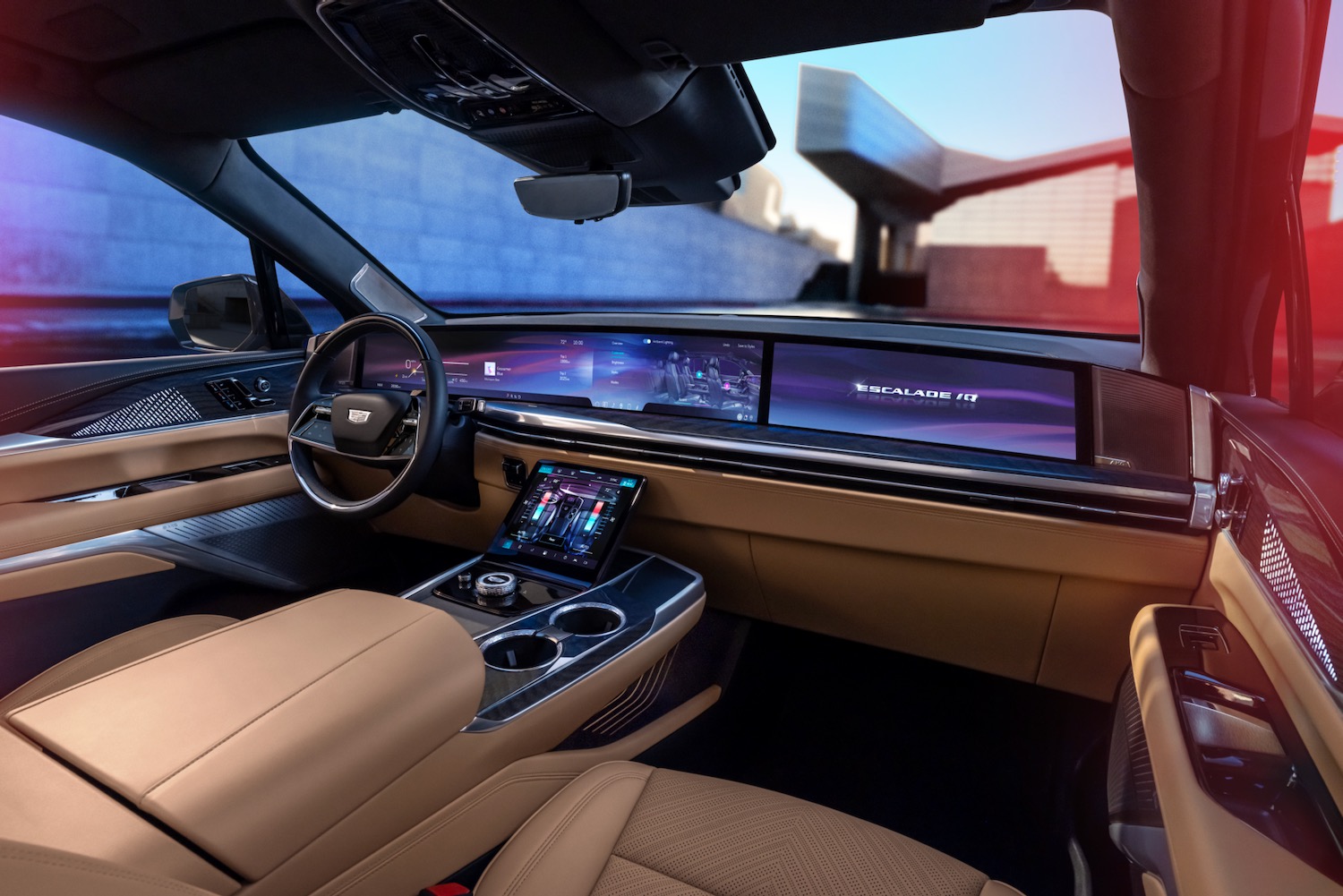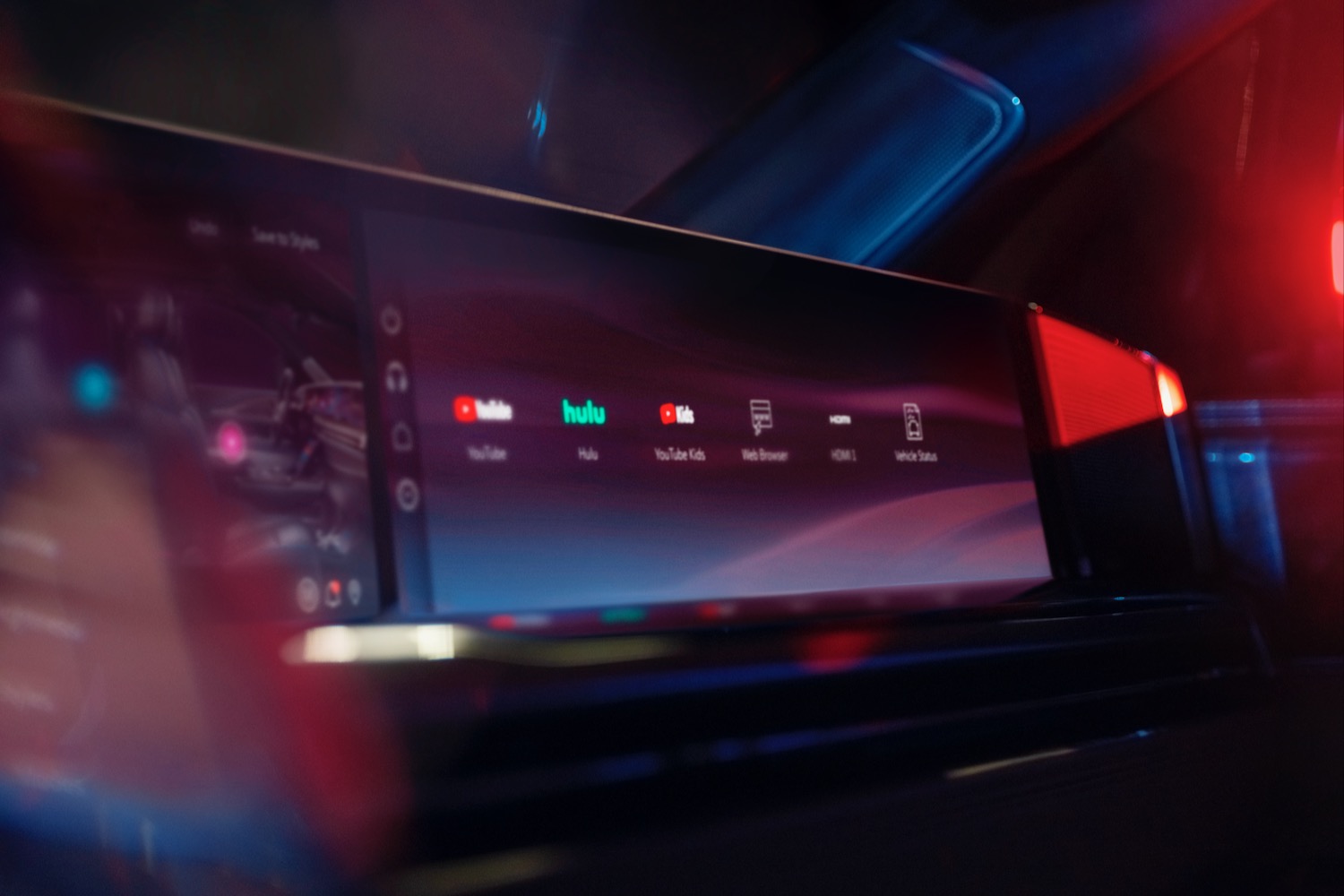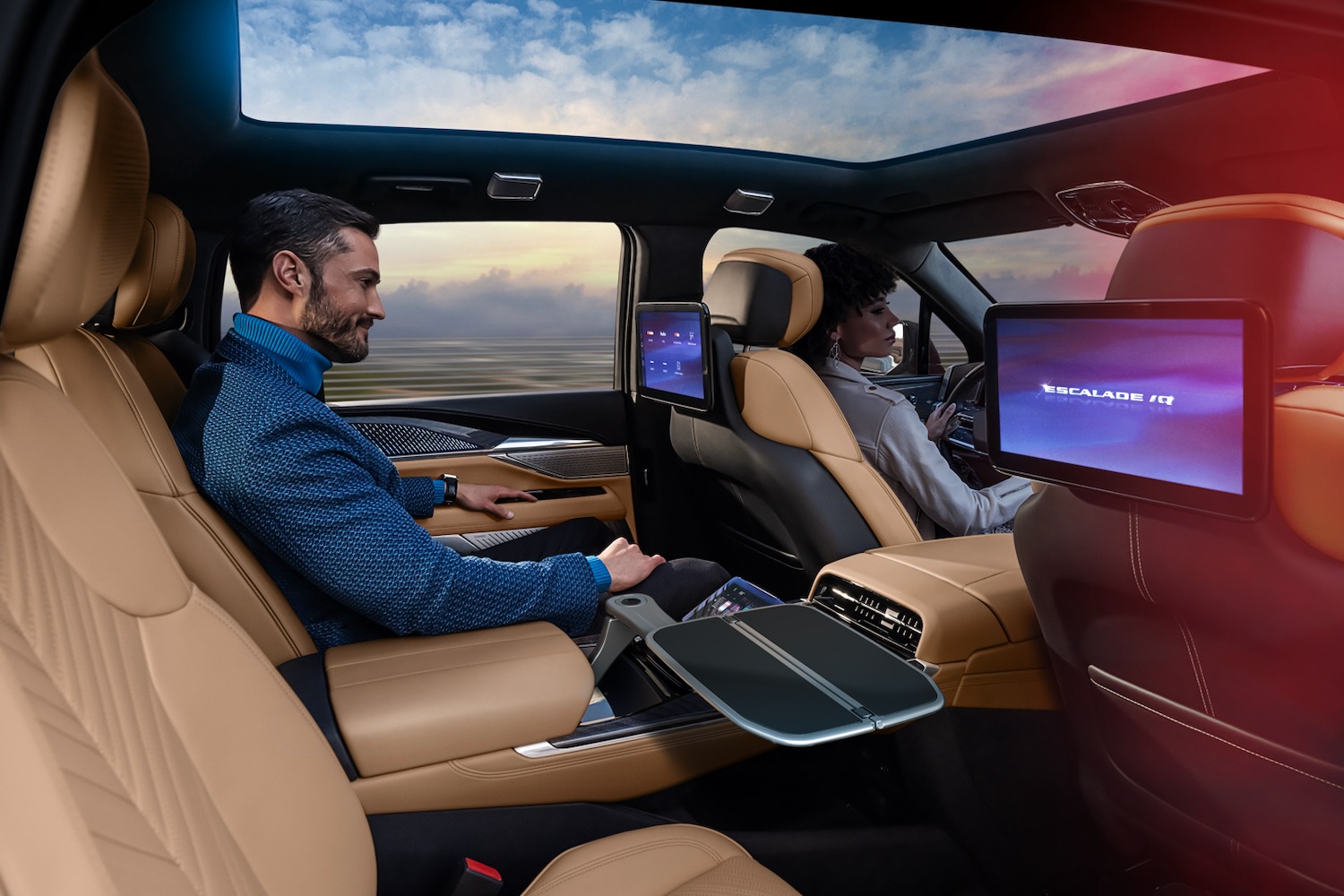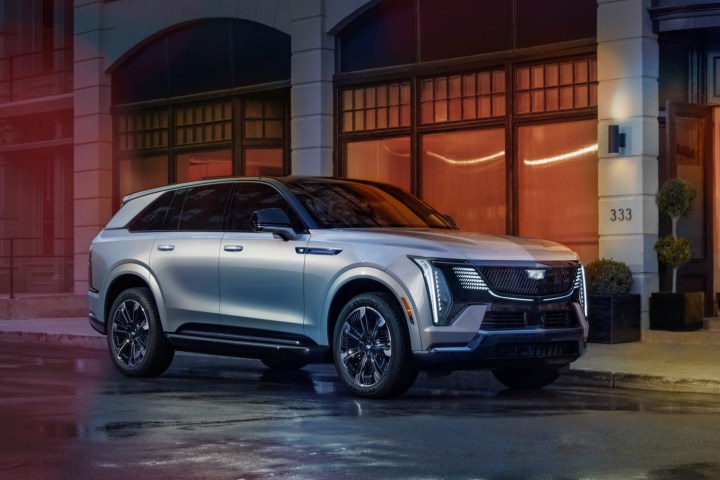
The massive Cadillac Escalade isn’t exactly the picture of environmental friendliness, but General Motors is committed to expanding electrification to all corners of its product lineup — and that includes Cadillac’s big, three-row full-size SUV.
The all-electric 2025 Cadillac Escalade IQ begins production next summer, applying the same formula from the Chevrolet Silverado EV and GMC Sierra EV pickup trucks to a full-size luxury SUV. The Escalade IQ uses the name of a current GM internal-combustion model, but is based on the automaker’s Ultium EV component set, with an EV-specific body structure designed around a modular battery pack.
Texas-sized EV
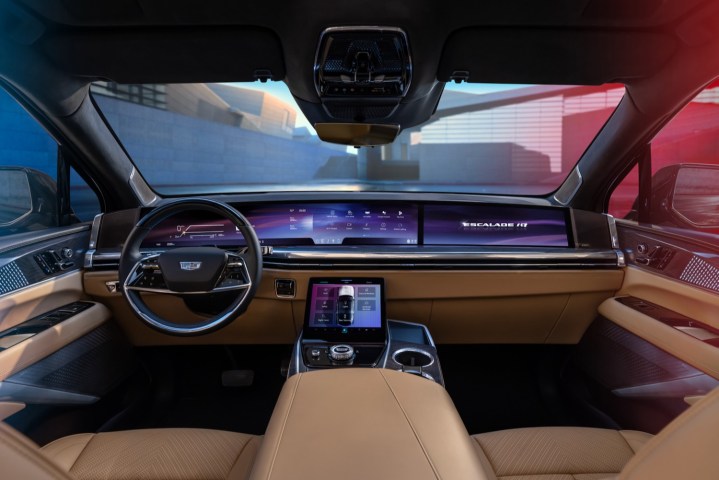
Those internals are wrapped in exterior styling that makes the IQ look like a Hulked-out version of the Cadillac Lyriq electric SUV. The upright profile and beefy proportions are indeed Escalade-like, but the grinning front fascia, lower roofline, and split taillights are straight off the smaller, more svelte Lyriq. Despite enormous 24-inch wheels, GM claims the IQ is 15% more aerodynamic than its internal-combustion full-size SUVs.
The seven-seat IQ is a bit longer than a standard Escalade (no word yet on whether Cadillac will do an electric version of the elongated Escalade ESV) and stands just as tall. A 15.3-inch wheelbase stretch yields a bit more third-row legroom, but passenger space is otherwise fairly close to the standard Escalade. Behind-seat cargo space is down slightly from the internal-combustion model, but the Escalade IQ does offer a 12.2-cubic-foot frunk, which Cadillac calls the “eTrunk.”
Interior tech puts even the standard Escalade’s 38.0-inch infotainment display to shame. A 55-inch display screen spans the entire dashboard. Like all new GM infotainment systems, the Escalade IQ system gets built-in Google features, including Google Assistant, Google Maps, and Google Play. An Executive Second Row package adds individual 12.6-inch screens for second-row occupants, plus a control touchscreen, dual wireless charging pads, and the option for a 40-speaker AKG Studio Reference audio system.
Massive battery pack fights range anxiety
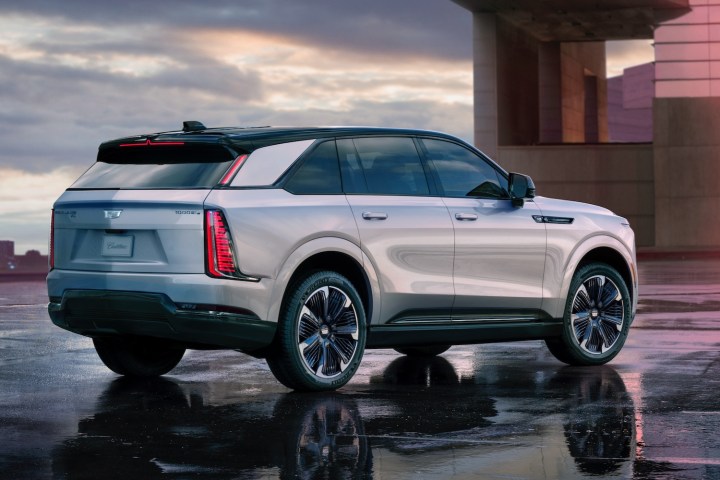
An enormous 200-kilowatt-hour battery pack will afford up to 450 miles of range, Cadillac estimates. It feeds power to one electric motor per axle, with a combined output of 680 horsepower and 615 pound-feet of torque in normal mode and 750 hp and 785 lb.-ft. of torque in the Velocity Max performance mode. With maximum power engaged, Cadillac says the Escalade IQ will do zero to 60 mph in less than 5 seconds. A maximum towing capacity of 8,000 pounds is just behind the internal-combustion Escalade’s 8,200-pound maximum.
Cadillac claims the Escalade IQ will be able to recover 100 miles of range per 10 minutes of DC fast charging, 37 miles per hour of charge time using a 19.2-kilowatt Level 2 AC charging station, or 14.8 miles per hour of charging with the included 7.7-kW dual-level AC charge cord. Like the GMC Hummer EV, the Escalade IQ will also be capable of outputting power to charge other EVs, or serve as a backup power source through vehicle-to-home (V2H) charging. The latter will require a software update that will be pushed after launch, as well as the purchase of some V2H-specific home hardware.
Four-wheel steering reduces the turning circle to a reasonable 39.4 feet, Cadillac claims, and enables something called Arrival Mode. This lets the Escalade IQ move diagonally at low speeds, similar to the Hummer EV’s Crab Walk feature. Air suspension is nothing new in a luxury SUV, but the Escalade IQ gets a Low Ride Mode that lets it skim the pavement with the suspension fully lowered (again, at low speeds).
Like the standard Escalade, the Escalade IQ will be available with GM’s Super Cruise system. This allows for hands-free driving on adequately mapped stretches of highway, but still requires drivers to keep their eyes on the road.
Filling a gap in Cadillac’s EV lineup
Cadillac isn’t ready to discuss pricing, but expect the Escalade IQ to fill the yawning chasm between the Cadillac Lyriq, which starts at around $60,000, and the Celestiq, a $340,000m hand-built EV flagship that takes aim at Rolls-Royce. As the only true electric full-size luxury SUV, the Escalade IQ will be without competition for the time being — unless you count the gasoline and diesel Escalades it will share dealer lots with.
Editors' Recommendations
- Mercedes G580 electrifies an off-road icon
- Genesis Neolun concept is an electric SUV inspired by tradition
- Bold style alone can’t muscle Chevy’s new Blazer EV to the head of its class
- The Lucid Gravity has more range than any other electric SUV
- 2025 Cadillac Escalade IQ: price, release date, design, specs

